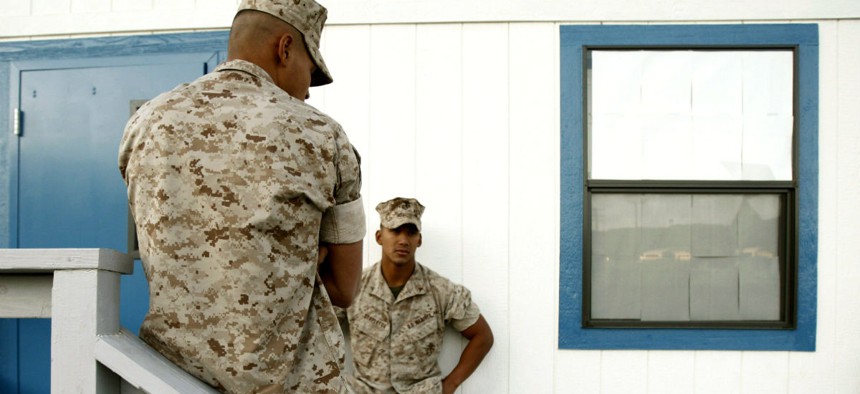Technology Could Enable Better Suicide Prevention for Veterans

Jae C. Hong/AP File Photo
To better take care of high-risk patients, the Veterans Affairs Department needs to get technology that frees up caregivers' time.
David LaBorde, M.D., is the chief executive officer of Iconic Data Inc. and a strategic adviser to DSS, Inc.
Veterans are more at risk than the general public to commit suicide, making up roughly 9 percent of the overall population but 18 percent of suicides. The Veteran Affairs Department reported in 2014 that an average of 20 veterans committed suicide every day. Combatting this is a top priority for the agency.
“This is a national public health crisis, and it requires solutions that not only VA will work on but all of government and other partnerships in the private sector, nonprofit organizations,” Veterans Affairs Secretary David Shulkin said earlier this year.
» Get the best federal technology news and ideas delivered right to your inbox. Sign up here.
Suicide prevention is a complex challenge and the current workflow methodology is tedious and inefficient. The challenge begins at the very start of the process: identifying the most vulnerable in the population. Only six of the 20 veterans committing suicide each day in 2014 were actual users of VA services.
Even when a veteran is receiving services, it is typically very tedious to methodically track the compliance and follow-up care of high-risk patients because much of the workflow is manual, and suicide prevention is not a focus of current electronic health care records.
This stretches already limited personnel to the limit. It’s been said that success in suicide prevention often requires heroic action every single day, which obviously is no way to design a system of care.
What’s needed is a platform that leverages the power of software, standardized workflows and data visualization tools, enabling care givers to give more time to patients and less to manual record keeping.
These modern options are available today. Through adoption and committed change management, they can make all the difference for veterans in need. Software-powered solutions can help the VA methodically manage the care of high-risk veterans, ensuring and monitoring compliance with established operating procedures. These tools integrate with a facility’s information systems, putting the right information at the fingertips of case managers, social workers, suicide prevention coordinators and facility leadership in real-time across mobile and desktop devices. It can help the VA standardize, measure and improve suicide prevention efforts.
An analogy to what is needed is how a commercial airline operates. There are a myriad number of safety checks that the flight crew goes through before takeoff. After those are completed and the airline is in the air, however, the crew engages computers to actually fly the plane, and record the hundreds of minute flight corrections made during the trip. Computers are far more accurate and efficient than humans could ever be at recording standardized tasks, freeing humans for other activities.
That’s what suicide prevention efforts at the VA require. A software-powered platform that can track how each high-risk veteran’s care is progressing; one that can identify events and automatically notify members of the suicide prevention team when issues arise or aspects of the veteran’s care are out of compliance. This will free caregivers from the need to spend so much time on vital but time-consuming manual note taking and data abstraction, and provide more time for actual care. It will also enable the VA to begin to truly measure how effective its process is, which is the first step toward constant improvement.
The VA has been a leader in other areas when it comes to technology. This year the agency launched a new program at the front end of the process, to better identify veterans at risk. The Recovery Engagement and Coordination for Health – Veterans Enhanced Treatment (REACH VET) program uses machine learning to analyze veterans’ health records and build predictive models of those that may be in the greatest need of assistance. REACH VET is an important initiative that can lead to earlier interventions. However, this type of technology must also be applied to the delivery of care once these high-risk veterans are identified.
Without such technology, there is no chance for end-to-end situational awareness that can provide the data for continual improvement of VA suicide prevention efforts. To be clear, the delivery of suicide prevention care can never be automated, but tracking and monitoring of that care, events that may warrant intervention, process metrics, and outcomes can and must be. Already strained by limited personnel and a large number of veterans in need of suicide prevention services, VA suicide prevention team members need to be given the best tools possible to fulfill their missions.
Suicide claims thousands of veterans every year. Even worse, the numbers continue to escalate, fueled by constant military engagements around the globe. Software-powered solutions can greatly improve the “blocking and tackling” component of suicide prevention efforts, saving lives and billions of dollars every year.


